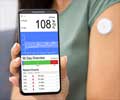Researchers at University of California, Los Angeles (UCLA) have identified three particular markers that may predict diabetes in still-healthy people.
Researchers at University of California, Los Angeles (UCLA) have identified three particular markers that may predict diabetes in still-healthy people.
In the first large scale, multiethnic study of its kind, the researchers have confirmed the role played by the three molecules known as cytokines as a cause of Type 2 diabetes, and have identified these molecules as early biological markers that may be used to more accurately predict future incidences of the disease among apparently healthy people.The study was conducted by a group of researchers led by Simin Liu, professor of epidemiology and medicine with a joint appointment in the School of Public Health and the David Geffen School of Medicine at UCLA.
The researchers have identified three inflammatory cytokines (cytokines are messenger molecules) tumour necrosis factor-alpha (TNF-a); interleukin-6 (IL-6); and high-sensitivity C-reactive protein (hs-CRP) that may be one of the causes of type 2 diabetes.
"This is a final confirmation of earlier studies about the underlying biology behind type 2 diabetes," said Liu.
"Our study identified 1,600 new cases of diabetes and measured the blood markers before they developed the disease," he said.
The researchers took advantage of the Women's Health Initiative Observational Study (WHIOS), an ongoing, long-term study that was designed to examine the association between behaviour, socio-economic status, diet, and other factors and the effect on a woman's health.
The WHIOS study involved some 82,000 postmenopausal women who cut across multiple ethnicities, including whites, blacks, Hispanics, and Asian/Pacific Islanders. At the time of follow-up, Liu and colleagues compared 1,584 women, now diagnosed with type 2 diabetes, and matched them by age, ethnicity and other factors to 2,198 other women in the study who remained free of the disease.
"The pro-inflammatory state is often linked to obesity which can lead to insulin resistance. So, identifying these markers by a simple blood test well before a disease begins not only can help improve mechanistic understanding of the disease, but also offer alternatives to lifestyle-hitting an optimal balance of nutrition, for example, and engaging in more exercise - relatively simple things that can prevent disease," said Liu.
The study is published in the August 15 issue of the journal Archives of Internal Medicine.
Source-ANI
LIN/J
 MEDINDIA
MEDINDIA
 Email
Email










